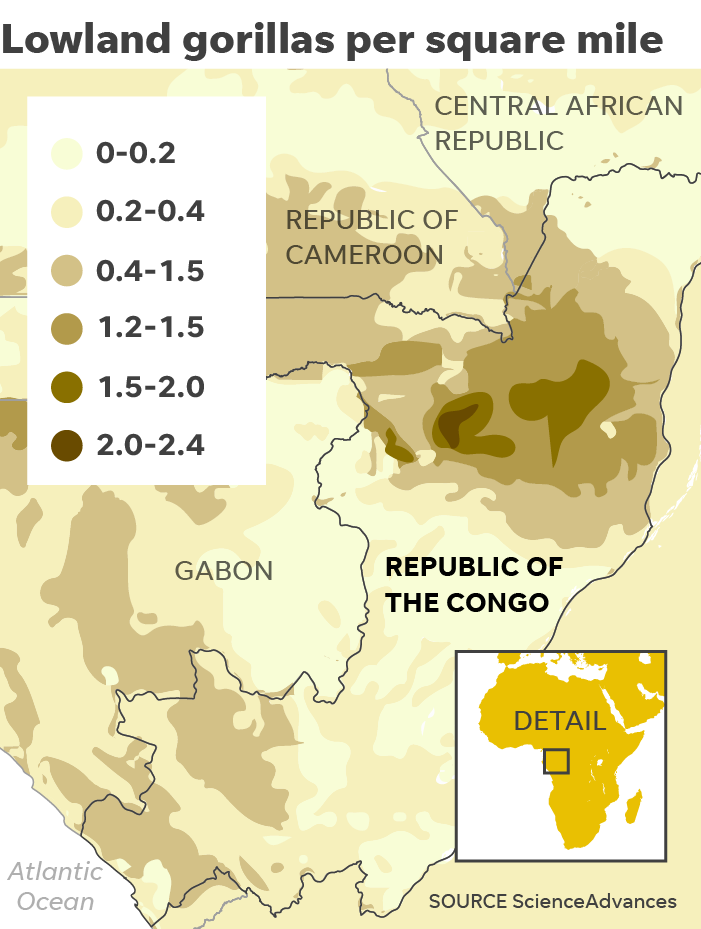
Cross River gorillas are found in only a 750 km² (290 mi²) area in Nigeria and Cameroon, a pocket of land that is isolated from the majority of this region. Western gorillas (including western lowland and Cross River gorillas) are found in a geographic area of about 709,000 km² (273,746 mi²) covering parts of Nigeria, Cameroon, Central African Republic (CAR), Equatorial Guinea, Gabon, Republic of Congo, Angola, and far-western Democratic Republic of Congo (DRC). Gorillas are patchily distributed in east central and equatorial west Africa, separated by the Congo River and its tributaries. Gorillas live between 30 and 40 years in the wild and up to 50 years in captivity (Stoinski pers. Because of their sheer size, adult gorillas must climb near the main trunk of a tree or on large branches while juveniles and adolescents are more agile (Tutin et al.

Spending the majority of their lives on the ground, the main locomotion pattern of gorillas is quadrupedal knuckle-walking although they do climb and spend limited amounts of time standing bipedally. Males and females are sexually dimorphic, with males weighing up to 181 kg (400 lb) in the wild and 227 kg (500 lb) in captivity and measuring, on average, 1700 mm, while females weigh between 72 and 98 kg (159 and 216 lb) and measure, on average, 1500 mm (4.92 ft) (Rowe 1996). Dominant adult males, called silverbacks, have a prominent sagittal crest and striking silver coloration from their shoulders to rump. Gorillas have dark brown to black fur and black skin. Mountain gorillas have significantly longer hair than their conspecifics, while western gorillas have brown, not black, hair on their heads, and eastern gorillas have longer faces and broader chests than western gorillas (Rowe 1996 Nowak 1999). To some extent, even the inexperienced observer can distinguish the subspecies from one another. There are few striking physical differences between subspecies of gorilla, though differences in dentition and craniometric analyses reveal distinguishing morphological characteristics of each subspecies (Rowe 1996 Leigh et al. Western and eastern gorillas are more genetically distant from one another than are chimpanzees ( Pan troglodytes) and bonobos ( Pan paniscus) (Butynski 2001).


 0 kommentar(er)
0 kommentar(er)
